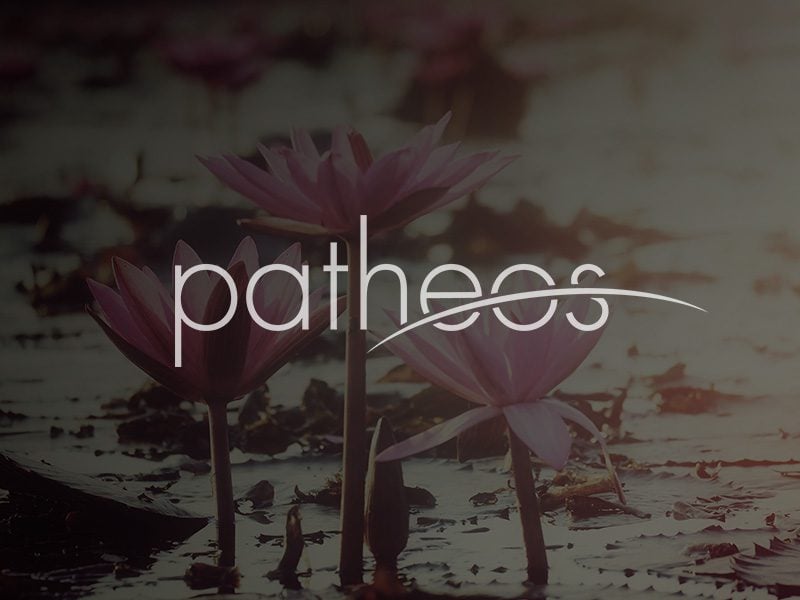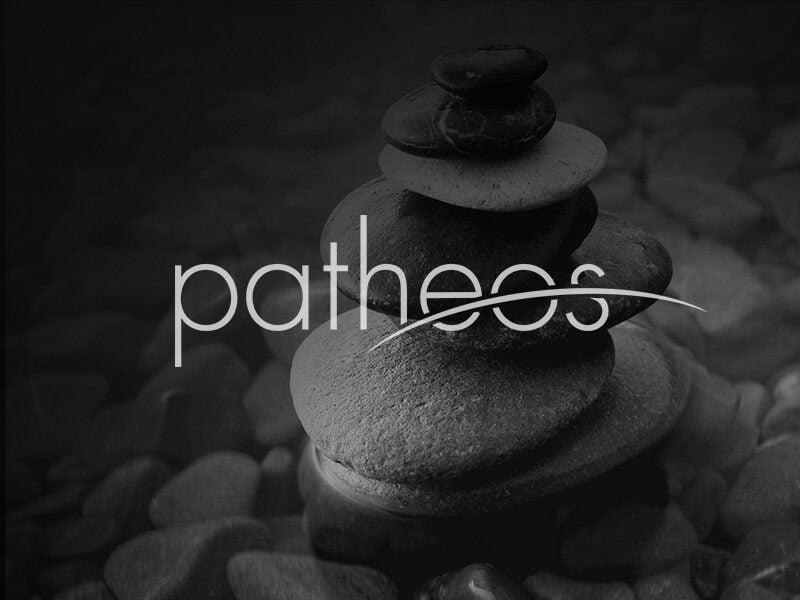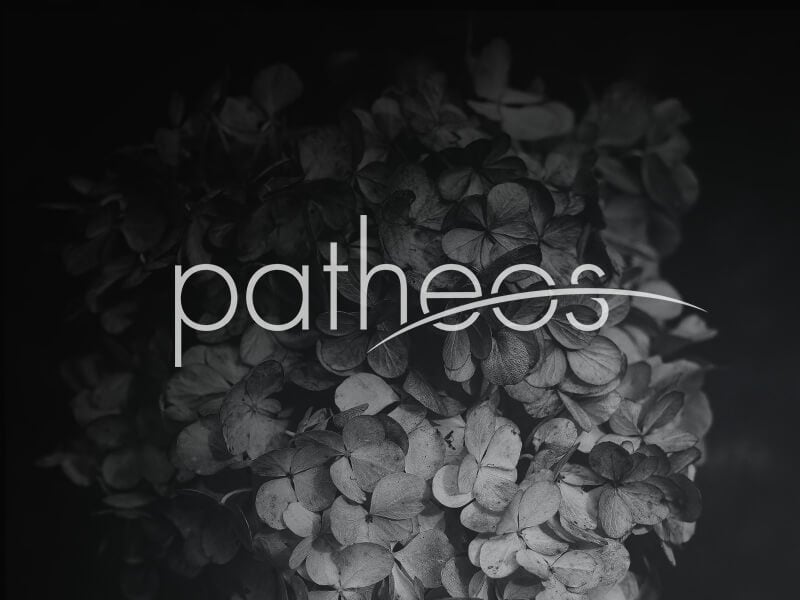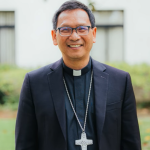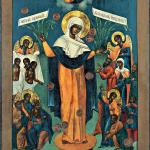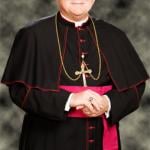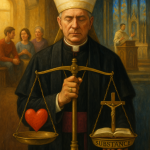Vatican City, Jan 11, 2017 / 04:14 pm (CNA).- Ken Hackett is preparing to wrap up his term as U.S. Ambassador to the Holy See as Donald Trump's presidential inauguration looms next week. And while he says no one can predict what Trump will do in office, he expects the fiery campaign talk to simmer down once the “reality of governing” sets in. Hackett, a former head of Catholic Relief Services who was pulled from retirement in 2013 to serve as the U.S. Ambassador to the Holy See, sat down for an interview in Rome with CNA Jan. 10. Running a nation, he reflected, “calls you to be your best, to weigh decisions, to listen to advice, to play the role on the world’s stage that the United States has played and is capable of playing.” He voiced optimism that “good will prevail” and Trump will “take the best advice that's offered to him.” One of the issues Trump was most outspoken on during the campaign, and where some of his most controversial and provocative statements were directed, was immigration – a major priority for Pope Francis. When asked whether he anticipates the topic being problematic for relations between the Trump administration and the Holy See, Hackett said “no government agrees with another government on everything.” However, there's “no more dynamic, moral leader in the world than Pope Francis at this moment in time, so I think you better find a way to engage, and I’m sure the Trump administration will.” As of now, no new ambassador has been selected. Once Trump nominates someone, several months will be needed for security vetting and for the Senate to issue their approval. In the interim, the U.S. will be represented by the Embassy's Deputy Chief of Mission Louis L. Bono. In his interview with CNA, Hackett reflected on some of the highlights of his tenure, points of mutual collaboration between the U.S. government and the Vatican, as well as expectations for the future administration.Please read below for the full text: You are just finishing your term as U.S. Ambassador to the Holy See. Can you tell us what some of the highlights have been? Unquestionably the highlight was the Pope’s visit to the United States. That was so because we worked hard on it, on both the logistics and the substance. There was a lot at stake. This was really his first visit to the United States of America and we didn’t know which way it was going to go, and it was a rousing success. His speech on the White House lawn, his speech in Congress, his speech at the basilica, at the U.N., at Madison Square Gardens, St. Patrick’s, and then in Philly. It was great.Do you have any specific memories of Pope Francis or memories that stood out, either during the trip or in general in your time here? I would say Congress was particularly memorable and that’s because most of us who were keen observers really didn’t know how he was going to come across. Should he make the speech in Spanish? Should he make it in Italian? Should he make it in English? It’s not his first language and he chose to make it in English and he did marvelous. When he said ‘home of the free, land of the brave,’ bingo! That hit. Then when he talked about Dorothy Day, Thomas Merton, Martin Luther King, Abraham Lincoln, he connected with the American people. Not American Catholics, but American people and that was powerful.The Pope in that speech reiterated a lot of things he’s been firm about from the beginning. What have been some of the greatest areas of collaboration between the U.S. Embassy to the Holy See and the Vatican? Well the Holy Father is particularly taken with the issue of migration and the subset of that is of course trafficking of persons and he has asked that there be special attention on that. That’s one area we’ve worked very closely on. Then the issues of peace and stability and security, whether it be in the Central African Republic where he visited, in Southern Sudan, in Congo, in the Philippines, trying to bring a peaceful settlement in Colombia, resolution of the situation in Venezuela, and of course Cuba. So there were many areas where we found common cause and were able to be supportive, engaged, offering help, encouragement. A lot of areas.I remember and have seen that the Embassy has partnered in hosting and organizing a lot of different initiatives, particularly on trafficking. Do you expect some of the partnerships in these areas to continue? I can’t but expect them to continue. I mean these are devastating parts of the human condition that need to be fixed, so no matter what administration comes in I’m sure that we’ll be able to continue to engage on many, many of these things. On human rights issues, on war and peace, and issues that affect people’s dignity. That’s where we’ll continue, I’m sure.Specifically on the topic of peace. In the Pope’s speech to diplomats this year he mentioned peace really needing to be more than a theory when it comes to politics. How important do you think this message is in today’s context? It’s terribly important. The whole speech was directed at peace and security and he really covered the globe. He challenged nations to on the one hand look at issues of the common good, not just for themselves, but in the broader sense: go away from your country and think about your part in bringing peace and a better society on a worldwide basis. That was a big challenge. He picked out individual countries and challenged the governments in those countries. He talked about a re-capture of the European experiment, the “project” as no longer an experiment, and he wanted nations to lift themselves up to the best they could be and that’s a challenge.He really did emphasize this need for individual nations to go beyond themselves and look to the entire global sphere in promoting the common good. Do you think that’s realistic? It’s an ideal. But shouldn’t we have ideals? And he calls us to raise up to our ideals, as nations, as individuals. If you take his concept of mercy and look at it very broadly, it could apply to nations too. Reaching out for the other, going beyond yourself. You can always be more than just what the lowest common denominator is in your nation. We in the United States could do so much more. We do a great deal, but we could do even more and we could be more accommodating, we could be more engaged. It’s an ideal that we should be searching for.Another point the Pope mentioned in his speech was the topic of his message for the World Day of Peace, which was nonviolence as a style of politics. How do think this factors into developing policies? He’s linked this to the migration crisis, how do you think this idea factors into the political and diplomatic realm? It’s a challenge. But he wasn’t talking about pacifism. He was talking about using violence – he mentioned specifically using God’s name to justify violence. He talked about a world free of nuclear weapons, which was something that Paul VI raised. He didn’t say that nations should rid themselves of their nuclear weapons, again he said, this is the ideal. And calling people to a negotiated solution to troublesome situations. I think that’s a wonderful challenge that I hope we can raise ourselves up to.Shifting to the future, I think these challenges and questions surrounding them are things we all have in our minds when it comes to how the new administration in the United States will handle them. In your opinion and from your experience, what do you think we can expect from the new president-elect? I don’t know. Who knows? It would only be speculation, but what I do expect is that the rhetoric of the campaign will be put behind him and the reality of governing will kick in very soon, and that calls you to be your best, to weigh decisions, to listen to advice, to play the role on the world’s stage that the United States has played and is capable of playing. So I’m an optimist. I’m going to search for those elements where he could be leading, but I don’t know. I’m sitting here in Rome and not in the United States, so I know even less. I only know what I read in the papers, but I’m hoping and hopeful that good will prevail and he’ll take the best advice that’s offered to him.One of the concerns despite our hopes is the constant concern about immigration. Donald Trump’s immigration rhetoric during the campaign was very strong and I think many are anticipating tension between his administration and Francis on this issue since it’s such a big one for the Pope. Do you foresee this being problematic in terms of relationship between the Trump administration and the Vatican? No government agrees with another government on everything. I believe that the people I know in the Curia and the Vatican will find a way to hold firm to their positions while at the same time attempting to dialogue on changes. So if there are differences on migration or any other issue, I’m sure that they will engage both in Washington and here, to look for solutions. Particularly in the Holy See they’re not stuck on “well, we just disagree.” They’ll try to find a way, and hopefully the Trump administration will try to find a way as well. There is no more dynamic, moral leader in the world than Pope Francis at this moment in time, so I think you better find a way to engage, and I’m sure the Trump administration will.On the flip side, do you see areas where there is perhaps potential for strong collaboration? There could be collaboration on particular countries, China, hopefully the Middle East and Middle East peace, extending U.S. interests throughout Latin America on peace in Colombia and a solution in Venezuela, further progress in Cuba. Those are all areas where the Holy See is interested and the U.S. government is interested. The issues of poverty, I have to believe that maybe there will be differences in approach, but nonetheless I have to believe that the Trump administration would want to eliminate some of the worst poverty that still exists in the world. And hopefully he will engage in a positive way on issues of war and peace. You’ve got to be hopeful.What are your plans now? My wife and I will get on the plane on January 20 and will fly to Miami with the dog, and then we have a small place north of Jacksonville, and we’ll just relax. This will be my second retirement, so I will try to enjoy it. We’ll try to see a bit of the United States that we’ve never seen since we’ve lived outside the country most of our adult lives. Then we’ll see what comes along. Who knows? Read more


